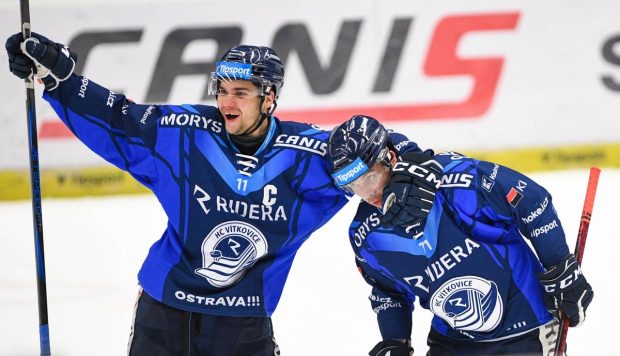

It’s early May, and you may be wondering if it’s already too late to claw your way up the standings. Or maybe you can see a championship this year if you could just gain 20 points of batting average or drop your ERA by a third of a run.
But can you? Short answer: yes, but you’ll have to improve going forward. Here, I will quantify how much better you need to be as the season approaches the quarter mark.
Advertisement
Let’s say you aspire to lift your team batting average from .240 to .260 — a big jump, but plenty doable. What’s it going to take? The season is 23% done. If you can run a .266 average the rest of the way, you’ll end up at .260. Another way to think of it is you gain 10 points of batting average for every 62 hits you add to your team total. (These are approximations based on typical league sizes. Your actual mileage may vary.)
The chart below reminds us that most of the season is left. The first column is your team’s batting average now, the first row is its average the rest of the way, and the intersection is where you’ll end up.
| ROS AVG | 0.200 | 0.220 | 0.240 | 0.260 | 0.280 | 0.300 |
|---|---|---|---|---|---|---|
|
AVG on May 8th |
||||||
|
0.200 |
0.200 |
0.215 |
0.231 |
0.246 |
0.262 |
0.277 |
|
0.210 |
0.202 |
0.218 |
0.233 |
0.249 |
0.264 |
0.279 |
|
0.220 |
0.205 |
0.220 |
0.235 |
0.251 |
0.266 |
0.282 |
|
0.230 |
0.207 |
0.222 |
0.238 |
0.253 |
0.269 |
0.284 |
|
0.240 |
0.209 |
0.225 |
0.240 |
0.255 |
0.271 |
0.286 |
|
0.250 |
0.212 |
0.227 |
0.242 |
0.258 |
0.273 |
0.289 |
|
0.260 |
0.214 |
0.229 |
0.245 |
0.260 |
0.275 |
0.291 |
|
0.270 |
0.216 |
0.232 |
0.247 |
0.262 |
0.278 |
0.293 |
|
0.280 |
0.218 |
0.234 |
0.249 |
0.265 |
0.280 |
0.295 |
|
0.290 |
0.221 |
0.236 |
0.252 |
0.267 |
0.282 |
0.298 |
|
0.300 |
0.223 |
0.238 |
0.254 |
0.269 |
0.285 |
0.300 |
What’s that going to take? Let’s say you swap out a low-average slugger — Kyle Manzardo, perhaps — for a contact master like Jacob Wilson. Projections give Wilson around 40 more hits over the rest of the season, which is good for about six points of batting average. Not bad, but you’ll have to make three swaps like that to get your 20-point lift.
Or maybe you don’t. After all, if your team is underperforming in a category, it likely means you have some positive regression coming your way. At this point last year, Corbin Carroll was hitting .208. He finished the year at .288, including the dismal start.
All of this is true in reverse, too. If you’re sitting pretty with all the BABIP luck, check the chart above to see where you might end up if you’re not as fortunate in the future, and plan around that.
Let’s do the same for ERA. Here’s the equivalent chart, again with the season so far in the first column and rest-of-season in the first row.
| ROS ERA | 3.00 | 3.20 | 3.40 | 3.60 | 3.80 | 4.00 |
|---|---|---|---|---|---|---|
|
ERA on May 8th |
||||||
|
3.00 |
3.00 |
3.15 |
3.31 |
3.46 |
3.62 |
3.77 |
|
3.10 |
3.02 |
3.18 |
3.33 |
3.49 |
3.64 |
3.79 |
|
3.20 |
3.05 |
3.20 |
3.35 |
3.51 |
3.66 |
3.82 |
|
3.30 |
3.07 |
3.22 |
3.38 |
3.53 |
3.69 |
3.84 |
|
3.40 |
3.09 |
3.25 |
3.40 |
3.55 |
3.71 |
3.86 |
|
3.50 |
3.12 |
3.27 |
3.42 |
3.58 |
3.73 |
3.89 |
|
3.60 |
3.14 |
3.29 |
3.45 |
3.60 |
3.75 |
3.91 |
|
3.70 |
3.16 |
3.32 |
3.47 |
3.62 |
3.78 |
3.93 |
|
3.80 |
3.18 |
3.34 |
3.49 |
3.65 |
3.80 |
3.95 |
|
3.90 |
3.21 |
3.36 |
3.52 |
3.67 |
3.82 |
3.98 |
|
4.00 |
3.23 |
3.38 |
3.54 |
3.69 |
3.85 |
4.00 |
So, yes, you can drop half a run off that 4.00 ERA, it just means being a touch under 3.40 going forward. Not easy! But again, if this is an issue for you, positive regression will likely be your friend. Michael King, Tanner Bibee and George Kirby were among the names looking lackluster a year ago today. There are also always unexpected names that pop up. Michael Wacha, Erick Fedde, Ronel Blanco and Sean Manaea were all stellar from this point forward last year.
Advertisement
Let’s also imagine you can make a roster move (trade or otherwise) that gives you a half-run gain on ERA, say a Merrill Kelly or Brayan Bello to Cristopher Sanchez (based on projections). How much does that help?
Each tenth of an ERA point is equivalent to 16.1 earned runs in a 1,450-inning season. ATC projects Kelly and Bello to have 4.08 ERAs going forward, and Sanchez to be significantly better at 3.58, with five more innings. That amounts to … five earned runs! Pitchers walk a fine line. Last year, seven earned runs separated Corbin Burnes from Sean Manaea.
So, to get your ERA down a tenth of a point, you’ll need half-run improvements from three starters. With relievers, you have to make even bigger jumps in quality to get the same results: Carlos Estevez is projected to give up five more runs for the rest of the year than Mason Miller.
These improvements won’t fall into your lap, but they are achievable.
We don’t need to do this for every stat, but to give you a sense of the work cut out for you, we’re at the point in the season where only a few players are projected for 30+ homers or steals going forward. Gaining 20 homers is likely to be a multi-player effort, unless you do something like swap Anthony Santander for Steven Kwan.
It’s a similar story with strikeouts, but again, with pitching, you are more likely to find lightning in a bottle. You can try to trade for a strikeout specialist like Carlos Rodon, or take your chances on a Yusei Kikuchi bounce-back or a big debut from Cade Horton.
Wherever your team is, it can make big gains (or losses!) from here, and now is the time to map out how you will make that happen.
(Top photo of Christopher Sanchez: Jamie Sabau / Getty Images)
This news was originally published on this post .








Be the first to leave a comment